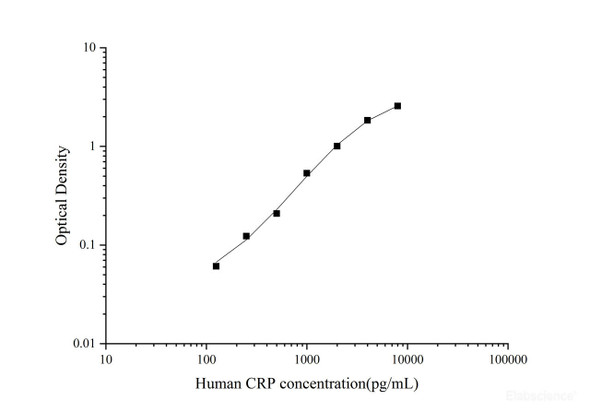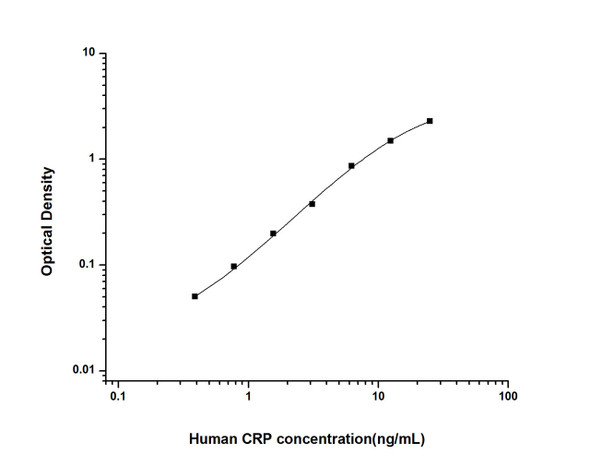Description
| Product Name: | QuickStep Human CRP (C-Reactive Protein) ELISA Kit |
| Product Code: | AEES00636 |
| Assay Type: | Sandwich |
| Format: | 96 Assays |
| Assay Time: | 2.5h |
| Reactivity: | Human |
| Detection Range: | 0.39-25 ng/mL |
| Sensitivity: | 0.23 ng/mL |
| Sample Type & Sample Volume: | Serum and plasma, 50μL |
| Specificity: | This kit recognizes Human CRP in samples. No significant or interference between Human CRP and analogues was observed. |
| Reproducibility: | Both intra-CV and inter-CV are < 10%. |
| Application: | This ELISA kit applies to the in vitro quantitative determination of Human CRP concentrations in serum and plasma.Please consult technical support for the applicability if other biological fluids need to be tested. |
This ELISA kit uses the Sandwich-ELISA principle. The micro ELISA plate provided in this kit has been pre-coated with an antibody specific to Human CRP. Samples (or Standards) and biotinylated detection antibody specific for Human CRP are added to the micro ELISA plate wells. Human CRP would combine with the specific antibody. Then Avidin-Horseradish Peroxidase (HRP) conjugate are added successively to each micro plate well and incubated. Free components are washed away. The substrate solution is added to each well. Only those wells that contain Human CRP, biotinylated detection antibody and Avidin-HRP conjugate will appear blue in color. The enzyme-substrate reaction is terminated by the addition of stop solution and the color turns yellow. The optical density (OD) is measured spectrophotometrically at a wavelength of 450 ± 2 nm. The OD value is proportional to the concentration of Human CRP. You can calculate the concentration of Human CRP in the samples by comparing the OD of the samples to the standard curve.
| Kit Components: | An unopened kit can be stored at 2-8℃ for six months. After test, the unused wells and reagents should be stored according to the table below.
|
| 1. | Add 50μL standard or sample to the wells, immediately add 50μL Biotinylated Detection Ab working solution to each well. Incubate for 90 min at 37°C |
| 2. | Aspirate and wash the plate for 3 times |
| 3. | Add 100μL HRP conjugate working solution. Incubate for 30 min at 37°C. Aspirate and wash the plate for 5 times |
| 4. | Add 90μL Substrate Reagent. Incubate for 15 min at 37°C |
| 5. | Add 50μL Stop Solution |
| 6. | Read the plate at 450nm immediately. Calculation of the results |
C-reactive protein (CRP) is a member of the phylogenetically ancient and highly conserved ‘pentraxin’ family of proteins, which also includes serum amyloid P component (SAP), a constituent of all amyloid deposits [1]. In man and other animal species, CRP is a major acute-phase plasma protein displaying rapid and pronounced rise of its serum concentration in response to infection or tissue injury.CRP is used mainly as a marker of inflammation. Apart from liver failure, there are few known factors that interfere with CRP production. Interferon alpha inhibits CRP production from liver cells which may explain the relatively low levels of CRP found during viral infections compared to bacterial infections [2]. Measuring and charting CRP values can prove useful in determining disease progress or the effectiveness of treatments. ELISA, immunoturbidimetry, nephelometry, rapid immunodiffusion, and visual agglutination are all methods used to measure CRP.






